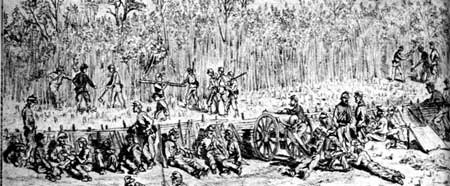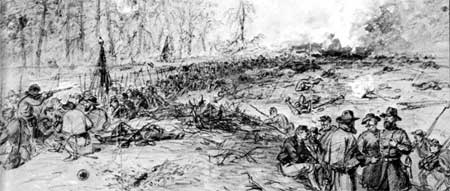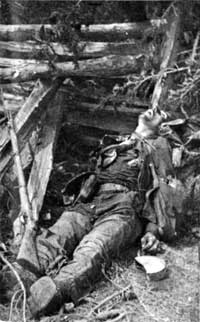|
FREDERICKSBURG and SPOTSYLVANIA COUNTY BATTLEFIELDS MEMORIAL National Military Park |
 |

In the Forbes drawing (above), soldiers of
Hancock's II Corps clear a field of fire along the Brock Road on May 10,
1864, a position they held only with hard fighting and heavy losses. Two
days later his Union infantry massed for the dawn attack on Lee's
salient (below). The fighting there was some of the toughest of the
entire war. At one point, wrote Hancock, the two battlelines were so
close that the Confederate 'flags stood on one side of the intrenchments
while ours stood on the other, only separated by the parapet, the two
lines firing into each other's faces.' The Confederate below lies at the
foot of a barricade he had defended during Ewell's attack on the Union
right on May 19.
Courtesy, Library of Congress

ANOTHER MARCH
|
Last Modified: Mon, Dec 2 2002 10:00:00 am PDT |




